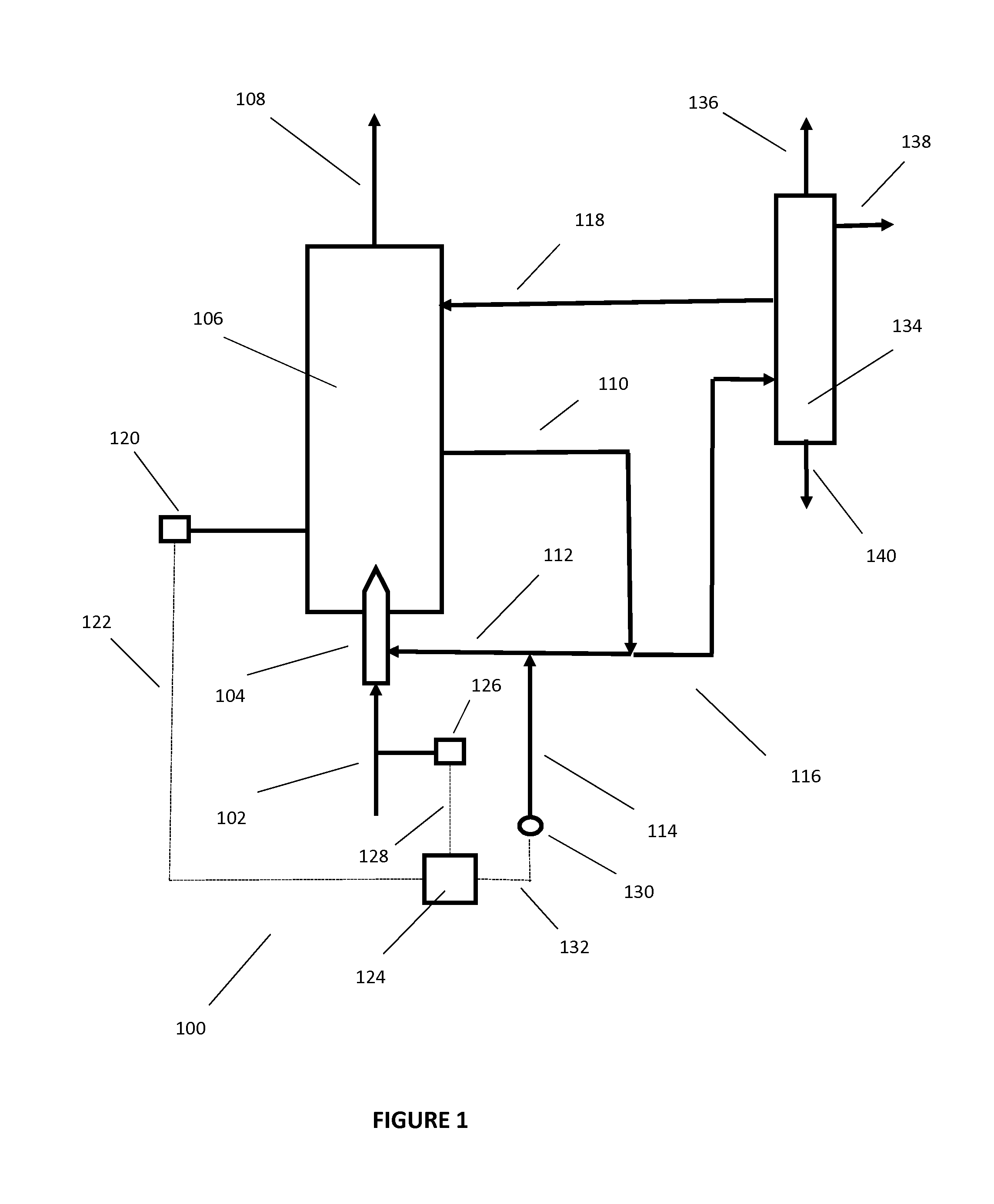Processes for the anaerobic bioconversion of syngas to oxygenated organic compound with in situ protection from hydrogen cyanide
a technology of oxygenated organic compound and bioconversion process, which is applied in the direction of biofuels, fermentation, bacteria, etc., can solve the problems of inherently recalcitrant bioconversion, limited availability of agricultural feedstocks that provide readily fermentable carbohydrates, and generation of hydrogen cyanid
- Summary
- Abstract
- Description
- Claims
- Application Information
AI Technical Summary
Benefits of technology
Problems solved by technology
Method used
Image
Examples
Embodiment Construction
Definitions
[0020]Oxygenated organic compound means one or more organic compounds containing two to six carbon atoms selected from the group of aliphatic carboxylic acids and salts, alkanols and alkoxide salts, and aldehydes. Often oxygenated organic compound is a mixture of organic compounds produced by the microorganisms contained in the fermentation broth.
[0021]Fermentation broth means a liquid water phase which may contain dissolved compounds including, but not limited to hydrogen, carbon monoxide, and carbon dioxide.
[0022]Biomass means biological material living or recently living plants and animals and contains at least hydrogen, oxygen and carbon. Biomass typically also contains nitrogen, phosphorus, sulfur, sodium and potassium. The chemical composition of biomass can vary from source to source and even within a source. Sources of biomass include, but are not limited to, harvested plants such as wood, grass clippings and yard waste, switchgrass, corn (including corn stover), ...
PUM
 Login to View More
Login to View More Abstract
Description
Claims
Application Information
 Login to View More
Login to View More - R&D
- Intellectual Property
- Life Sciences
- Materials
- Tech Scout
- Unparalleled Data Quality
- Higher Quality Content
- 60% Fewer Hallucinations
Browse by: Latest US Patents, China's latest patents, Technical Efficacy Thesaurus, Application Domain, Technology Topic, Popular Technical Reports.
© 2025 PatSnap. All rights reserved.Legal|Privacy policy|Modern Slavery Act Transparency Statement|Sitemap|About US| Contact US: help@patsnap.com

